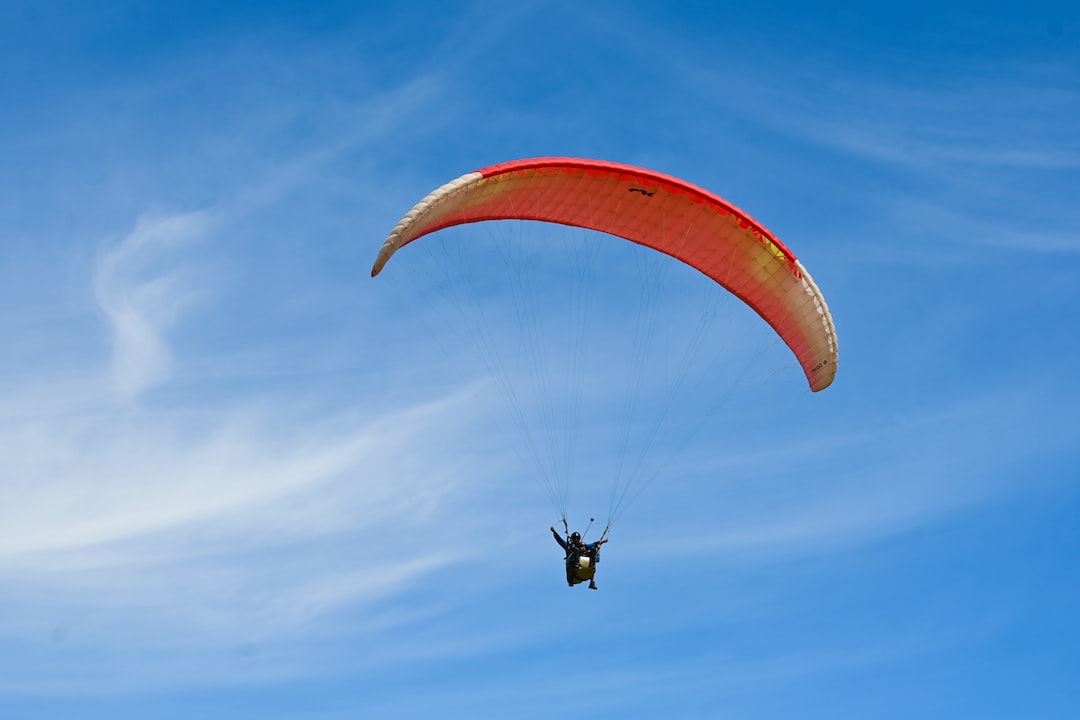Have you ever had a moment where you’re scanning through your bucket list and spot two thrilling items – paragliding and parasailing – and you’re just not sure which one to cross off first?
Both seem exhilarating, offering stunning bird’s eye views and a rush of adrenaline. But which one’s for you?
Hang tight. In this article, we’re diving into the ultimate showdown between paragliding vs parasailing. We’ll help make that exciting decision, so read on.
What Is Paragliding?
Paragliding is an aerial activity that involves you, a pilot, and an inflatable wing with no rigid structure. The pilot relies on thermals, wind currents, and the wing to keep them in flight.
Paragliders typically take off from hills or mountains, relying on steep slopes to get them airborne. Once up there, they can soar for hours at a time.
It’s essential to note that paragliding is not the same as skydiving. It doesn’t involve jumping out of an airplane.
Pros
Paragliding allows you to cover long distances, exploring vast areas from a unique perspective. It’s an excellent choice for adventure seekers and those who crave a sense of freedom.
Cons
For some people, the idea of being suspended in the air without any rigid structure can be quite daunting.
Another downside is that weather conditions play a significant role in whether you can go paragliding or not. If it’s too windy or rainy, your flight may need to be rescheduled.
What Is Parasailing?
Unlike paragliding, parasailing doesn’t require any physical effort on your part – except for taking off and landing.
A parasail is a canopy attached to a harness that’s connected to a motorboat or other watercraft. The boat then takes off, pulling you along with it as you glide and hover above the water.
Pros
One of the most significant advantages of parasailing is that it’s accessible to almost anyone. You don’t need any previous flying experience or special skills – just sit back and enjoy the ride.
If you also get into an accident during the experience, you can contact a cruise injury lawyer. This is because most parasailing experiences are offered by cruise ships.
Cons
Parasailing involves being pulled by a boat. So your flight path and duration are dependent on the boat’s speed and direction.
Paragliding vs Parasailing
Now that we’ve gone through the basics let’s break down some key differences between these two activities. Here’s a paragliding vs parasailing comparison:
Physical Effort and Control
Both adventure sports don’t require any previous experience. However, paragliding requires more physical effort as you need to run a few steps before taking off and control the glider mid-flight. Parasailing is relatively passive as you’re being pulled by a boat.
Flight Time and Distance
Paragliding offers longer flight times ranging from 30 minutes to several hours. Whereas parasailing has shorter flight times of around 15 minutes.
In terms of distance covered, paragliding typically covers greater distances. This is because it relies on thermals and wind currents for propulsion.
Environment
Both aerial activities offer breathtaking views from above. However, parasailing provides a more ocean-centric experience due to its reliance on boats. Paragliding allows you to explore the land and mountainous regions.
Which Do You Prefer?
Both paragliding and parasailing offer unique experiences that cater to different preferences. The choice depends on your personal preferences, physical fitness, and the kind of adventure you desire. Both activities deliver thrilling experiences that will leave you with unforgettable memories.
So, are you ready to fly?
Did you find this article about paragliding vs parasailing helpful? If so, check out the rest of our site for more.
